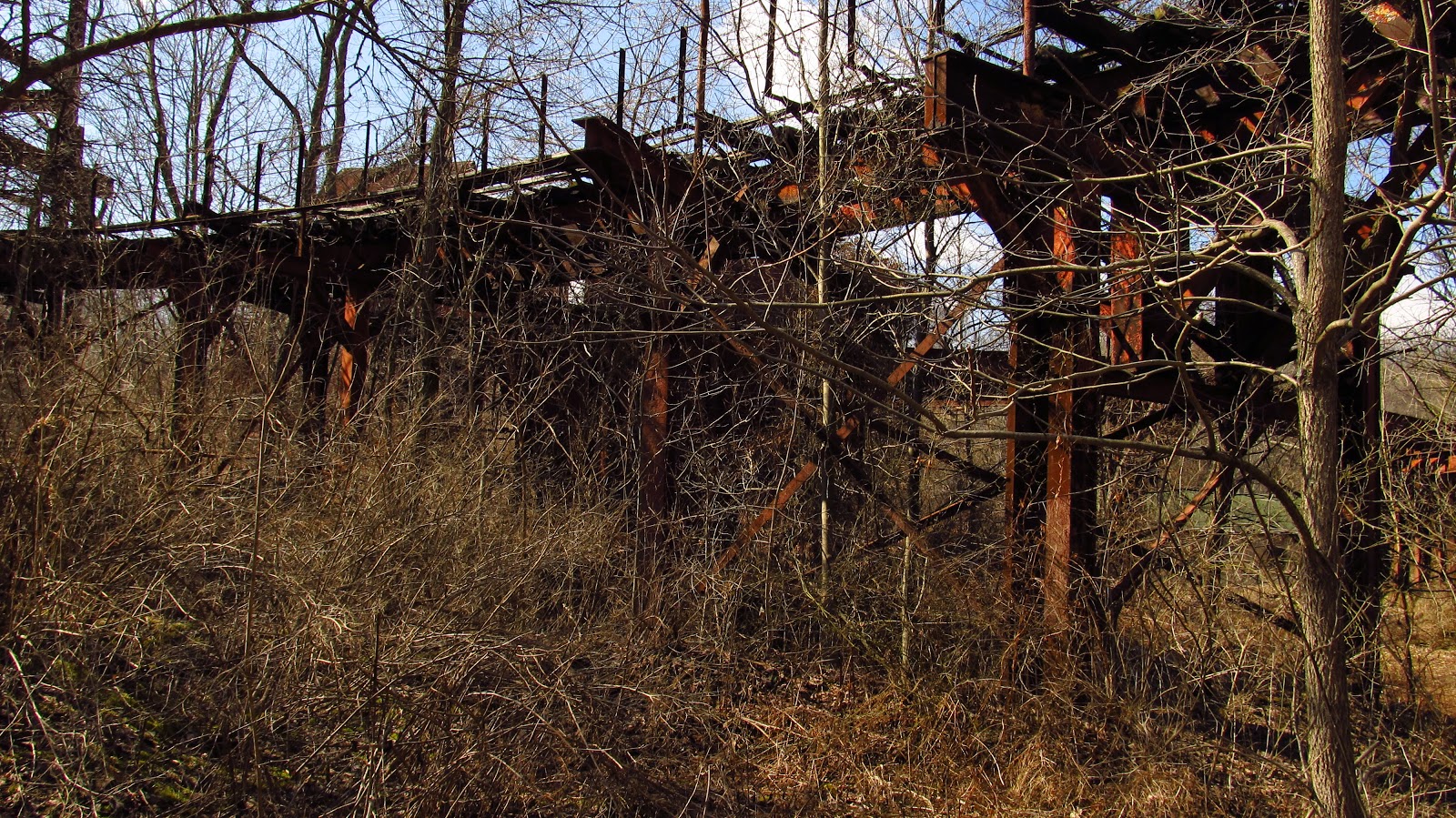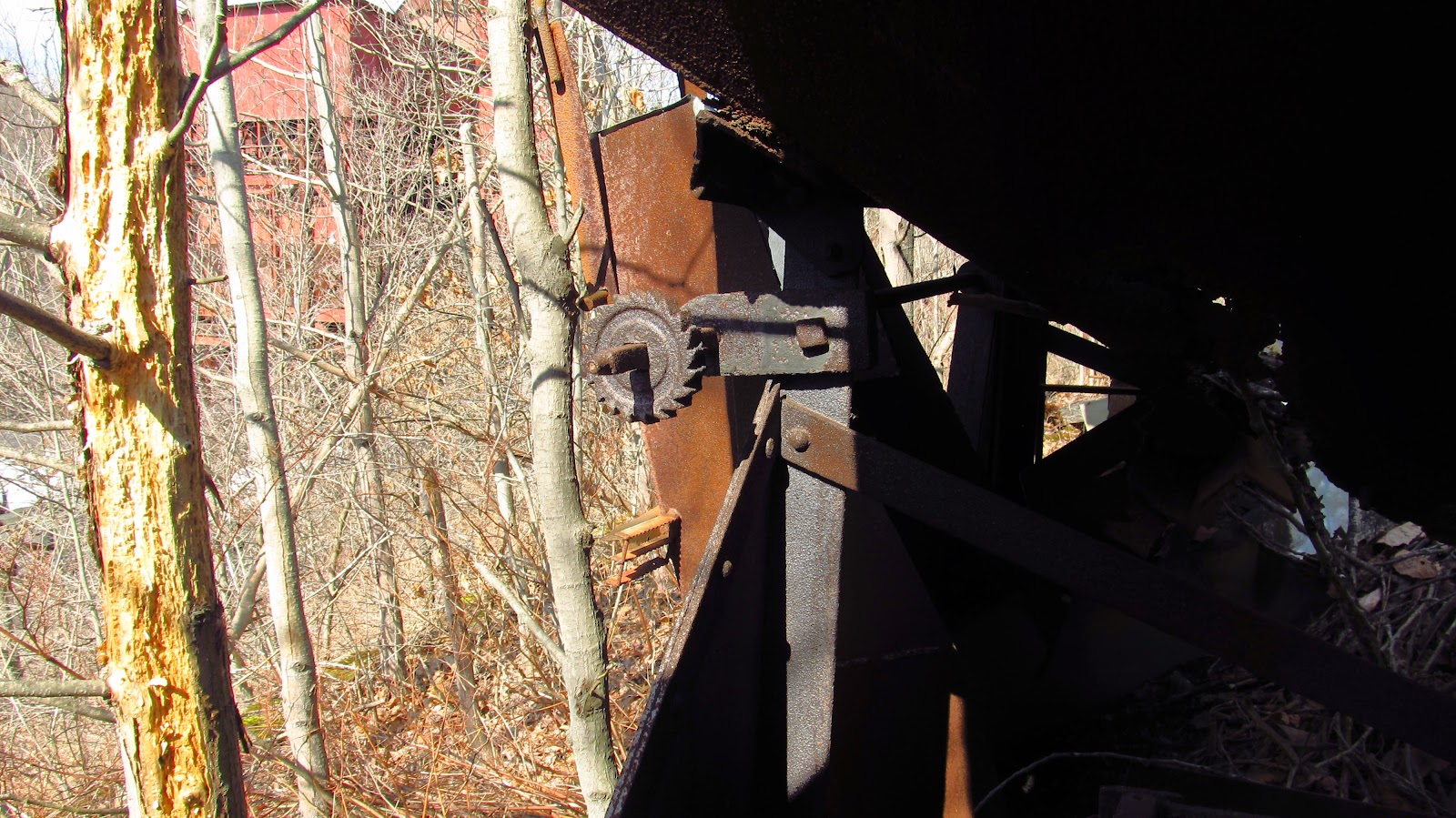This past Sunday I headed down to Shoaf to get a closer look at those ovens. It had been close to two years since I was last there. The last time I was there I spent a lot of time exploring that tipple and didn't get a chance to check out the back end of those ovens (the previous post can be found here: Shoaf ).
Shoaf is a hidden treasure of Fayette County that is not receiving its proper esteem. For years, various historical societies have been trying to convince the land owner to allow this site to be converted into a historical interpretive area and allow for proper preservation to take place. There really is no other place like it. Nobody has been able to convince the owner that this is a great idea. From what I've heard there is coal still left in the ground and he doesn't want to jeopardize his option of mining it in the future. However, the site and the patch town of Shoaf have received National Historic District status so that is a step in the right direction. https://www.dot7.state.pa.us/ce_imagery/phmc_scans/H101640_01H.pdf In my opinion it should be a National Park.
Shoaf was the last large commercial beehive coke plant to close in Pennsylvania. The ovens were in blast until 1972 when stricter DEP regulations forced the plant to go cold. Shoaf Mine and Coke Works date back to 1904 and were operated by the H.C. Frick Coke Company until 1922. U.S. Steel reopened the facility during World War II and it remained in operation until it went cold again in 1951. In 1958 Max Noble bought the coke works and kept the ovens burning until 1972. The Noble family still owns the site.
There is some work going on in the area and the site is closely watched nowadays. I got chased off but I got some great photos first. There is some kind of work going on out there. I'm not sure what is going on but the signs on the gate say "Pennsylvania Carbon". The work does seem to be restricted to the north end of the site, away from the ovens. That's where I got caught anyway....
 |
| Nice bridge between the blocks. |
 |
| Backside of the block. |
 |
| I'm not sure what this big bride over the ovens was used for. |
 |
| This is at the end of the block. |
 |
| Looking between the backside of the block and the row of banks. In the center is the deep loading area for the trains. |
 |
| Down in the deep loading area. |
 |
| Intact and still sturdy ladders allow you to climb all through here. |
 |
| The end of the bank ovens. |
 |
| Backside of the block, coke yard and wharf wall. |
 |
| In one of the bank ovens is this stash of floor tile block. |
 |
| Backside of the block. |
 |
| Back view of the larry cars on top of the block. |
 |
| Coke pulling machine. |
 |
| Part of the larry car track. |
 |
| Looking over at the tipple, coke pulling machine, larry cars and track. |
 |
| The track is a little banged up but it's here!! |
 |
| Underneath the larry track. |
 | |||||||||||
| More larry track. |
 |
| Kind of looks like an old roller coaster track. |
 |
| Coal storage bin. |
 |
| The gears of the coke pulling machine. |
 |
| Coke pulling machines were huge! |
 |
| Larry car wheels. |
 |
| Close up of the larry cars. These cars are really starting to rust away. In definite need of preservation. |
 |
| Coal chutes still in position. |
 |
| Larry track on top of the block ovens. |
 |
| Larry track looking back at the cars. The tipple is on the left. |
 |
| Manufacturers plate on the larry car. |
 |
| Built in 1942 by Connellsville Iron Works. |
 |
| Under side of one of the larry cars. |
 |
| Larry car radiator. |
 |
| Preserve these machines!! |
 |
| Another shot of the bridge. |
 |
| ANOTHER coke pulling machine! |
 |
| Parting shot of the larry cars. |
 |
| Big earth mover. |
 |
| Parting shot of the tipple. This tipple was brought over here from the anthracite region around 1963. The original tipple is no longer here. |
 |
| Big shovel. I'll head back in a couple years and check the condition of the place. |


















This "Pennsylvania Carbon" you were talking about is a graphite company I believe.
ReplyDeleteThank you. That is what that company is.
Delete